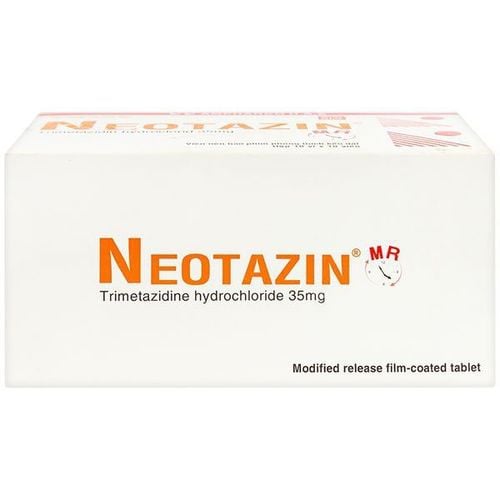This is an automatically translated article.
The article is professionally consulted by Master, Doctor Hoang Thanh Nga - Ophthalmologist - Department of Medical Examination and Internal Medicine - Vinmec Ha Long International General Hospital.
Central retinal artery occlusion is considered an ophthalmological emergency and should be treated as soon as possible to avoid the risk of irreversible blindness. The disease often appears without warning symptoms, so the level of danger increases.
1. Causes of disease
The retina is the nerve layer in the eye responsible for receiving and processing light. When an artery is blocked, blood cannot reach the retina. Retinal tissue will have no nutrients, cell metabolism processes cannot take place due to lack of oxygen, so it gradually dies. Dead retinal tissue means no images are received and causes vision loss.
Common causes of vascular obstruction:
Consequences of thrombosis due to inflammation (Lupus erythematosus, scleroderma, Kawasaki disease, tertiary syphilis..) Behcet's disease (vasculitis, host weakness in the veins) Horton's disease (localized arteritis of the superficial temporal artery) Cardiovascular diseases and high blood pressure Due to severe trauma to the pelvic region. Post-surgery or blood clot formation. Atherosclerotic disease Sickle cell disease, coagulation disorders Sepsis and intravenous injection with air bubbles. With the above typical causes, most central retinal artery occlusion usually occurs in elderly people. The disease causes severe vision loss and the recovery is very low.

Bệnh lý huyết áp có thể gây ra tình trạng tắc động mạch trung tâm võng mạc
2. Clinical forms
2.1. Transient blindness (arteriospasm)
Sudden onset of the disease leaving the patient completely blind in one eye. However, it usually only lasts a few minutes. Apart from the bout of visual acuity and fundus, there were no abnormalities. Further cardiac testing is needed to look for signs of carotid artery stenosis or blockage.
2.2. Occlusion of the central retinal artery
Causes different clinical signs depending on the location of the occlusion. The most common symptom is a sudden loss of vision, the patient loses the area of vision corresponding to the area of the blocked artery.
At the fundus of the eye there is a sign of retinal edema in the area of obstruction due to lack of perfusion. Sometimes it is found that the cause of the blockage is cholesterol or calcium fragments.
2.3. Occlusion of the central retinal artery in people with ciliary-retinal artery: Only about 20% of the lucky patients have the supporting ciliary-retinal artery, vision can be partially restored, the rest is mostly bad prognosis. In this case, when the artery is blocked, the retinal eyelid can still function. The patient still has severe vision loss, white edema in the fundus in the area between the optic nerve and the macula, but the surrounding retina is not damaged, not to the extent of losing vision as in other cases.

Tắc động mạch trung tâm võng mạc
3. Symptoms and Diagnosis
Central retinal artery occlusion occurs often without warning symptoms. Many patients discover the disease right after waking up, suddenly losing vision in one eye, not accompanied by eye pain.
To diagnose central retinal occlusion, the doctor will perform an examination and evaluate the following signs:
Eye exam:
Slightly dilated pupils, loss of reflexes or weak reflexes to direct light, reflexes Reaction (when the light is on the other eye, the pupil is still reflected). Sell the front part normally. Ophthalmoscopy:
Large arteries narrow much, as small as a thread, no blood in the artery lumen (in the early stages). Signs of ischemic retinal edema: the retina loses its transparency, turns milky white, and the pupil is grayish. The macular area is pinker than usual (cherry macular sign - due to swelling and discolouration of surrounding retinal tissue).

Soi đáy mắt giúp phát hiện tắc động mạch trung tâm võng mạc
4. Treatment measures
Currently, the treatment of central retinal artery occlusion is not nearly as good. Currently, some commonly used quick treatment methods are:
Hyperventilation: Let the patient breathe in a mixture of 95% oxygen and 5% carbon dioxide to dilate the arteries and push the occlusive agent to the stomach. other mind. Anterior chamber puncture: Drain the fluid in the anterior chamber of the eye to reduce the pressure in the eye so that the occlusion agent is moved to another location. Eye massage: Creates variable pressure inside the eye so that the cause of the blockage can escape. Use oral or intravenous vasodilators. Use antihypertensive drugs such as Acetazolamide Take anticoagulants to reduce the development of blood clots. Prevention of central retinal artery occlusion by pre-treatment of possible causes:
Horton's disease: Applying high-dose emergency corticosteroid therapy. Treatment of high blood pressure Surgical treatment in the presence of vascular disease or cardiovascular disease . Treatment of inflammatory foci of the body in general and in the eyes in particular.

Điều trị bệnh tắc động mạch trung tâm võng mạc bằng thuốc
5. Disease progression and prognosis
Progression of the disease depends on the severity and clinical form, early or late treatment. If the patient goes to the hospital within 2 hours of the onset of the disease and promptly treated, vision is still likely to recover. The retinal edema disappeared after a few days, and the arteries continued to circulate normally.
In case of arterial branch occlusion in the center of the retina, the lesions are stable, the field of vision defect corresponds to or extends to the entire retina. Often patients do not come on time, so the progress is often not good. Vision will be severely reduced, atrophy of the optic disc after 1 month leads to permanent blindness.
To register for examination and treatment at Vinmec International General Hospital, you can contact Vinmec Health System nationwide, or register online HERE.
Recommended video:
The first corneal transplant at Vinmec: Re-lighting after decades of darkness
SEE MORE
Refractive error screening package Young children can also have farsightedness Astigmatism is as worrying as nearsightedness













